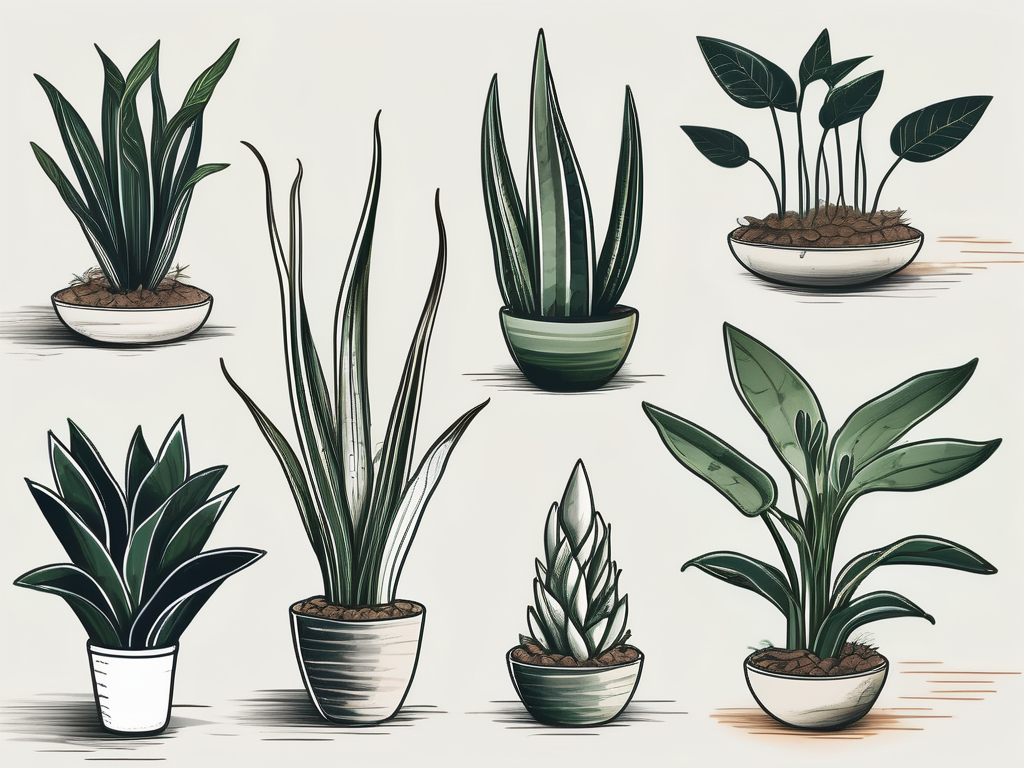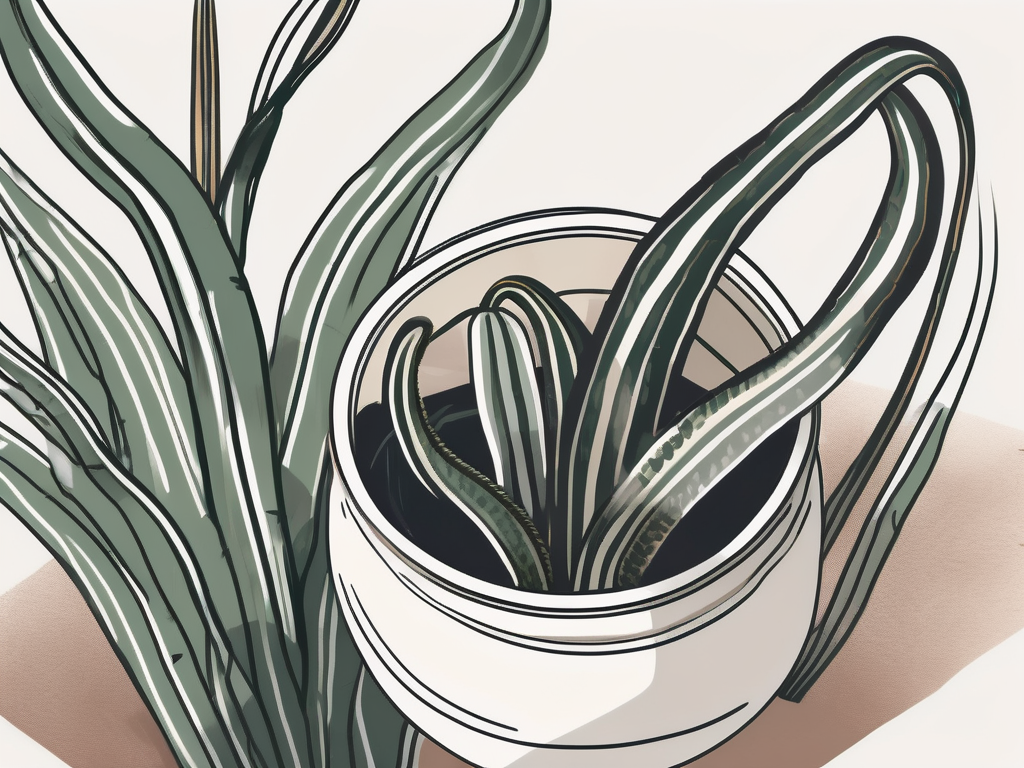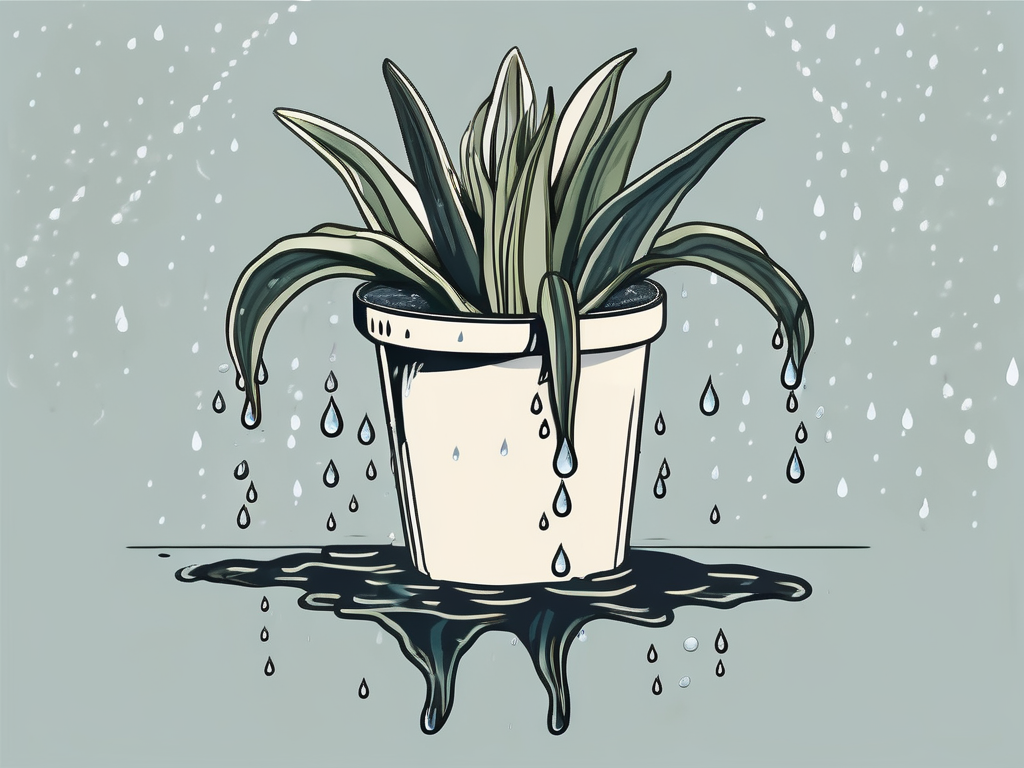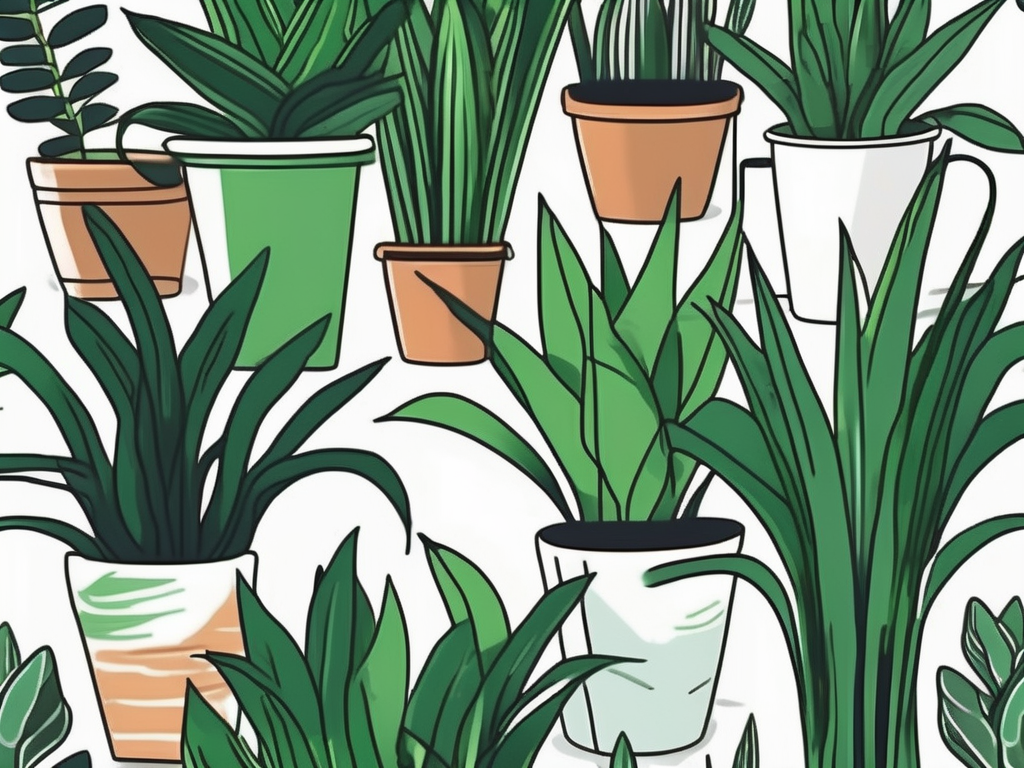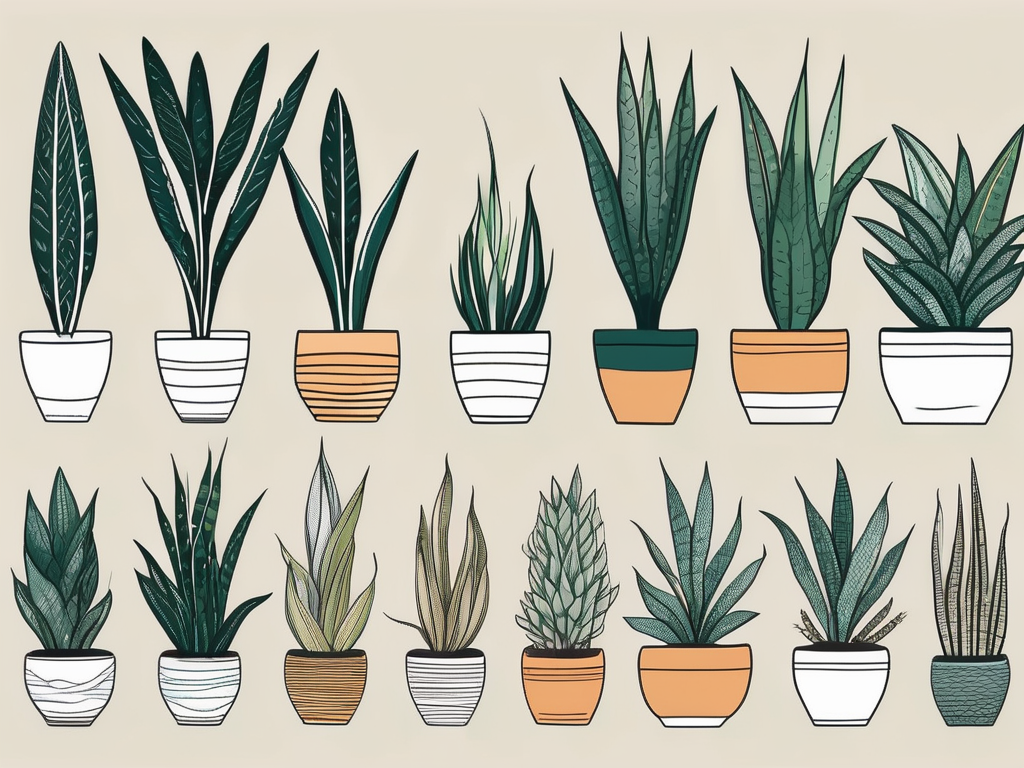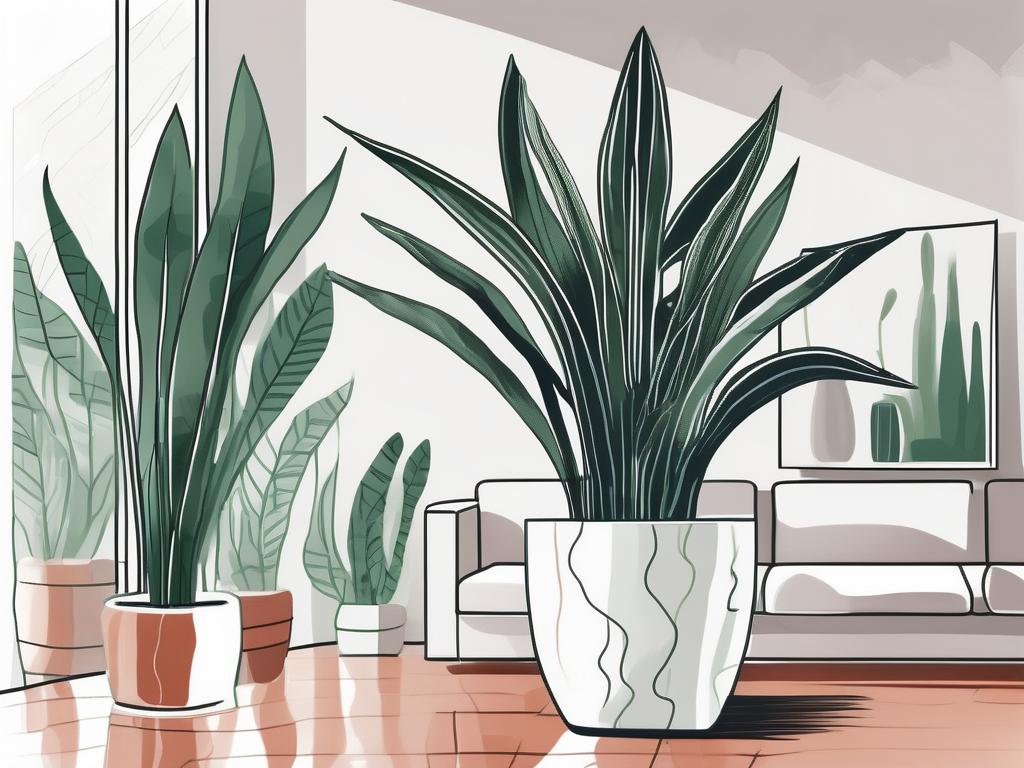
Snake plants are like the reliable friend of the plant world—always there, adaptable, and practically unkillable. But even these sturdy beauties have their preferences, especially when it comes to light. Whether you're new to the plant game or a seasoned green thumb, understanding what makes a snake plant thrive can be the difference between a plant that's merely surviving and one that's actively bringing life to your living space.
In this article, we'll chat about everything light-related when it comes to snake plants. From finding the perfect spot in your home to understanding how different lighting can affect their growth, we've got you covered. So grab a cup of coffee, settle in, and let's get started!
What Makes Snake Plants So Special?
Snake plants, also known as Sansevieria or mother-in-law's tongue, are native to West Africa. They're famous for their upright, sword-like leaves that add a touch of architectural flair to any room. But their charm isn't just skin deep. These plants are also incredibly resilient, handling environments that might leave other plants wilting in despair.
Their hardy nature is one reason why snake plants are a favorite among plant lovers. They can tolerate a variety of light conditions, from low light to bright indirect light. But just because they can survive in low light doesn't mean they're thriving. Like us, snake plants have their preferences, and understanding these can help you nurture a healthier plant.
Interestingly, snake plants have a unique ability to convert CO2 into oxygen at night. This makes them a perfect candidate for a bedroom plant, potentially improving air quality while you sleep. So, whether you’re looking to spruce up your office desk or add a touch of greenery to your bedroom, snake plants are an ideal choice.
Understanding Light Levels
Before we jump into the specifics for snake plants, let's quickly talk about light levels. When plant care guides mention light requirements, they're typically broken down into three categories:
- Low Light: Think of spaces that are shadowy but not completely dark, like a room with a small north-facing window.
- Medium Light: Areas with bright, indirect light, such as a room with filtered sunlight or a spot a few feet away from a south-facing window.
- Bright Light: Direct sunlight reaching the plant, like a sun-drenched windowsill.
It's important to note that most houseplants, including snake plants, prefer indirect light. Direct sunlight can be too harsh, potentially burning the leaves. Meanwhile, low light doesn’t provide enough energy for the plant to grow well. Snake plants, while adaptable, will benefit from finding that sweet spot in your home.
Finding the Perfect Spot
So, where should you place your snake plant? While they can survive in low light, your snake plant will be happiest with medium to bright indirect light. This means finding a spot where it can enjoy plenty of sunlight without the harshness of direct rays.
Consider placing your snake plant near a north or east-facing window. These locations tend to offer the right balance of light throughout the day. If you have a west or south-facing window, you might want to position the plant a few feet away to avoid direct sunlight.
If your home lacks natural light, consider supplementing with artificial lighting. LED grow lights can mimic the sun's spectrum, helping your snake plant thrive even in windowless rooms. Just be sure to place the light a few feet above the plant, and follow the manufacturer's guidelines to avoid overexposure.
Remember, moving your plant to different spots can help you determine where it grows best. Observe how the plant responds over weeks, and adjust as needed. If the leaves start to lose their vibrant color or show signs of sunburn, it might be time to reconsider its location.
Signs Your Snake Plant Needs More Light
Snake plants are quite forgiving, but they'll let you know when they're not getting enough light. Here are a few signs to watch for:
- Slow Growth: If your plant seems to be in hibernation mode, it may not be receiving enough light.
- Leggy Growth: Long, stretched-out leaves indicate the plant is reaching for more light.
- Pale or Yellowing Leaves: Fading colors can be a sign of insufficient light.
- Leaves Leaning Towards the Light Source: If your plant is bending or leaning, it's trying to soak up more light.
While snake plants are slow growers by nature, a healthy plant should still produce new leaves periodically. If you notice any of these signs, gradually move your plant to a brighter location and see if it perks up.
What About Too Much Light?
On the flip side, snake plants can also suffer from too much light. Although they prefer brighter conditions, direct sunlight, especially for prolonged periods, can cause trouble. Here’s what to look out for:
- Brown Tips or Edges: This could be an indication of sunburn, especially if the plant is too close to a window.
- Scorched Patches: Direct sun can create brown, scorched spots on the leaves.
- Faded or Washed-Out Leaves: Too much sun can bleach the vibrant green color of the leaves.
If your snake plant is showing signs of sun stress, move it to a spot with filtered light or provide some shade during peak sunlight hours. Remember, a happy medium is the goal. A little trial and error will help you find the perfect balance for your plant.
Seasonal Changes and Light
Another thing to keep in mind is how seasonal changes affect light availability in your home. As the days get shorter in winter, the light intensity and duration can decrease, which might mean your snake plant needs a little extra help.
During these months, you might notice slower growth, which is normal as many plants enter a semi-dormant state. However, if your snake plant seems particularly sluggish, consider moving it to a brighter spot or using grow lights to supplement the natural light.
In contrast, during the summer months, you might need to protect your plant from intense afternoon sun. Adjusting curtains or moving the plant away from harsh light can prevent sunburn and keep your plant looking its best.
By paying attention to these seasonal shifts, you can ensure your snake plant gets the light it needs year-round. It's all about staying observant and making small tweaks to accommodate the changing environment.
Effects of Light on Growth and Health
Light isn't just about aesthetics—it's a crucial factor in your snake plant's overall health and growth. Adequate light helps the plant photosynthesize efficiently, producing the energy it needs to grow and thrive. When your plant gets the right amount of light, you’ll notice several benefits:
- Vibrant Color: Healthy, well-lit snake plants showcase deep green hues and striking variegations.
- Steady Growth: While not fast growers, snake plants in good light will steadily produce new leaves.
- Strong Leaves: Adequate light results in sturdy, upright leaves that resist bending or breaking.
Proper lighting also boosts your plant's natural defenses against pests and diseases. A healthy snake plant is less likely to fall prey to common issues like root rot or spider mites. By ensuring your snake plant receives the right light, you’re setting it up for a long, healthy life.
Using Artificial Light Sources
Sometimes natural light just isn't an option. Maybe you live in a basement apartment or your windows face a shaded courtyard. That's where artificial light can save the day. But not all artificial lights are the same, and choosing the right one can make a big difference.
Full-spectrum LED grow lights are your best bet. They mimic natural sunlight, providing the necessary wavelengths for photosynthesis. When setting up artificial lighting, aim for:
- Distance: Keep the light source about 12-18 inches above your plant.
- Duration: Aim for about 12-14 hours of artificial light per day to mimic natural conditions.
- Positioning: Ensure even coverage to avoid uneven growth.
Artificial lighting can be a game-changer for plant people in low-light homes, allowing them to enjoy the company of snake plants even in the darkest corners. Just remember to monitor your plant’s response and adjust as needed, ensuring that your indoor jungle is as vibrant as possible.
Conclusion
Snake plants are wonderfully adaptable, but understanding their light needs can elevate your plant care game. By providing the right light conditions, you’ll encourage healthy growth and vibrant foliage, making your snake plant a standout feature in your home.
At Cafe Planta, we’re here to support your plant journey. If you need guidance or have questions, feel free to email us or reach out on Instagram. We believe plants bring people together, and we’re excited to help you create a beautiful, thriving plant collection in your home.


















